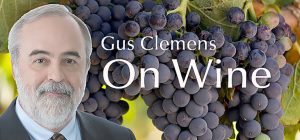Wine has an image problem that is both its biggest asset and its Achilles heal. Wine is the most complex alcohol drink.
If you examine wine’s consumer base, wine drinkers tend to be older, better educated, upper-middle class or above. The popular image: wine drinkers are old, snotty, rich people. Not an ideal demo if you are a marketeer striving to expand your winery’s customer base.
Let’s admit the basic truth behind the stereotype. Wine is complicated. I don’t need to know where the hops or barely or water came from to slam back a light beer. Just put the 18-pack in the cooler and start pulling pull tabs. Most wine drinkers do not approach wine that way.
As Baby Boomer wine drinkers began to savor the complexity of wine in the 1980s, words like “terroir” and “new French oak” and “malolactic conversion” and “whole cluster fermentation” and “carbonic maceration” and “sur lie” and “bâttonage” and “solera system” became part of their vocabulary. Not words typically blurted out by beer Bubbas at the local dive bar during happy hour.
As wine appreciation soared beginning in the 1980s, so came slick wine magazines, wine books, wine websites, wine gurus, wine tourism, wine clubs, and states opening up to direct-to-consumer wine sales from an exploding number of winemakers dedicated to quality. Ah, what heady times those were.
No trend lasts forever, although it can be argued that after 8,000 years wine hardly is a trend. But the wine world certainly faces headwinds in the 2020s. Wine is not going away, but the intoxicating wine burgeoning of the last 40 years appears to have reached an apogee.
And so winemakers have to assess who they are and what their product is. I suggest embracing wine for what it is—complicated, sophisticated, and still down-to-earth enjoyable. Dumbing down will not convince 21-something newbies to spend $18 on a bottle of wine instead of $10 on a six-pack of beer, hard cider, or malt beverage. But when, by happenstance, they experience a quality meal with a quality wine, then comes the “ah-ha” moment. This is what wine is all about.
Tasting notes:
• Domaine Bousquet Malbec, Tupungato Uco Valley, Mendoza, Argentina 2022: Fresh, crunchy, flagrantly ripe fruit. Simple but decadently indulgent in pleasuring your palate. $10-14 Link to my review
• Bonterra Sauvignon Blanc, California 2023: Wasy drinker, nice introduction to famously food-friendly sauv blanc. Round, smooth, happily approachable, pleasurable mouthfeel. $15 Link to my review
Last round: My wife told me: “I never listen to her.” Something like that. I don’t recall exactly. I don’t pay that much attention to what she says. Wine time.

